The misadventures of a novice.
From the Winter 2013 Issue
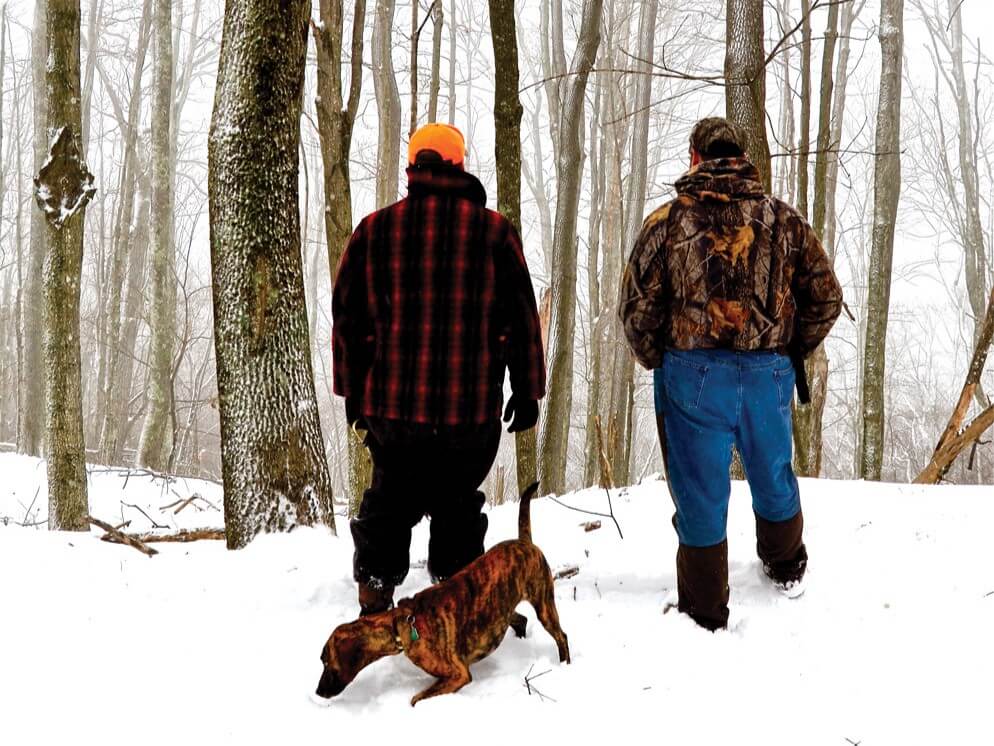
written and photographed by nikki bowman
(with the exception of one great photo taken by Michael Mills)
There’s something otherworldly about the woods in the winter, when the forest is perfectly iced with snow. The crisp air slightly stings your nostrils with the pungent perfume of pine. Modern life falls away. There’s a connectedness with nature that is hard to replicate. Outdoorsmen know this well.
I admit I don’t often trek into the wilderness in frigid weather. I’m partial to keeping my extremities warm and dry. So when I was invited to go on a bear hunt last December, my first response was to laugh, “Bear hunting? Really?” I could think of a million responses around the word “No.” The loudest being: “I’m not a hunter.” I am, however, a storyteller with insatiable curiosity, and despite my best efforts in declining the offer, I found myself penciling it in on my calendar. I’m told everyone has a bear story. And so mine begins.
On what had to have been the snowiest day in December, I joined a group of my friends, Michael Mills and Bader and Melissa Giggenbach and their two sons, in Morgantown before the crack of dawn. We ventured through the darkness and blizzard-like conditions to the deep recesses of Monongahela National Forest in Pocahontas County in the pursuit of the elusive black bear.
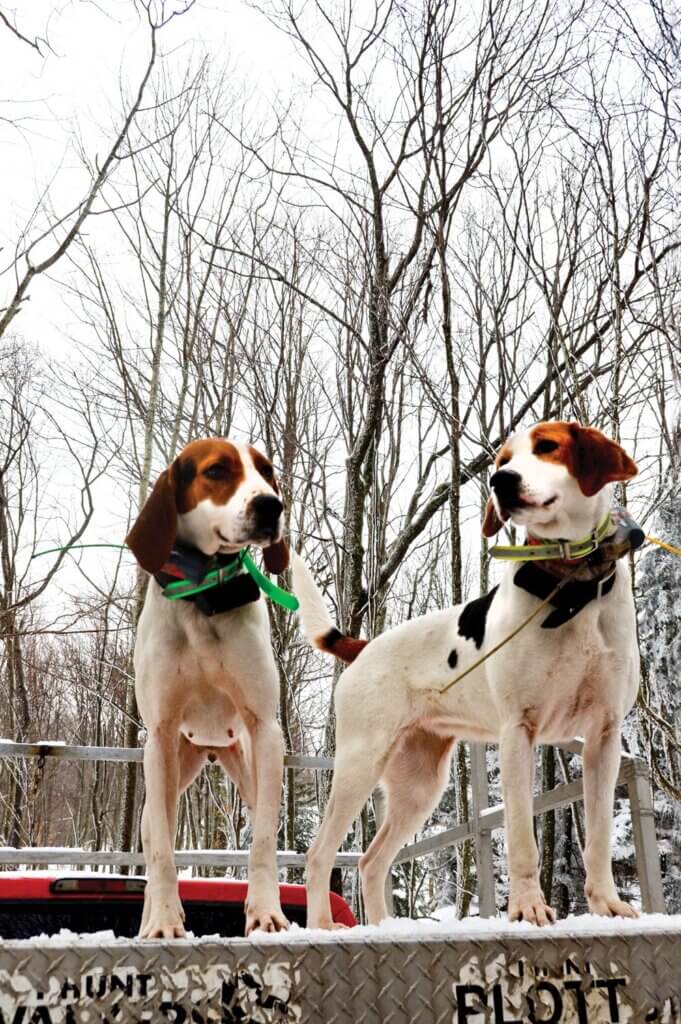
About a third of West Virginia residents say they know a great or moderate amount about black bears in the state, and about two-thirds say they know little or nothing, according to a 2012 West Virginia Division of Natural Resources (WVDNR) survey on bear management. I fell into the latter category. The extent of my knowledge was limited to the fact that the black bear is our state animal and that it is rare to see one in the wild. Embarrassingly, my vision of how one hunted a bear relied heavily on the children’s song “We’re Going on A Bear Hunt.” The one that goes: “We’re going to catch a big one! What a beautiful day! We’re not scared. Oh, oh!”
Despite my research, I was ill prepared for many things. First of all, the scouting and tracking of bears is a little more complicated than I thought, and it takes a long time. Our plan was to join a group of expert bear hunters—with names like Tree Trimmer, Hound Dog, and Hog Man—so once we arrived in the general vicinity, we took to walkie-talkies to track them down. Apparently this is how many sportsmen communicate. You have to earn a handle and speak in code to one another. (By the end of the day I’m proud to report I earned the moniker Picture Lady.) They say things like, “Go to the tree with the knot. Or meet at Midnight Crossing. And everyone, even though there’s a trillion trees in the area, knows where to find that exact spot. It was like playing the outdoorsman’s version of Clue. Hunters don’t want to give their position away to others in the vicinity, and even though there’s an unwritten honor code that hunters won’t get in someone else’s chase, not all follow it. Those few renegade groups are called outlaws, and they were described to me as “a bunch of damn ornery boys who get their kicks from being kill-crazy and taking bears away.” With that being said, I no longer question their riddle-speak.
I envisioned that we would park in a field and slowly meander through the woods searching for bear marks on trees, but that isn’t how it works. We spent a good bit of time in the truck, driving on old one-lane gravel logging roads that wind their way through the mountains, searching for fresh tracks. It is illegal in West Virginia to use bait to attract bears, so you must rely on the sniffing powers of the dogs. Hunters put their best strike dogs on top of the rig and drive around and around until they catch the scent of a bear. If the wind is blowing the wrong way or if a bear hasn’t crossed the road, it can be hard to pick up a scent. Houndsmen then take their leashed dogs into the woods looking for tracks.
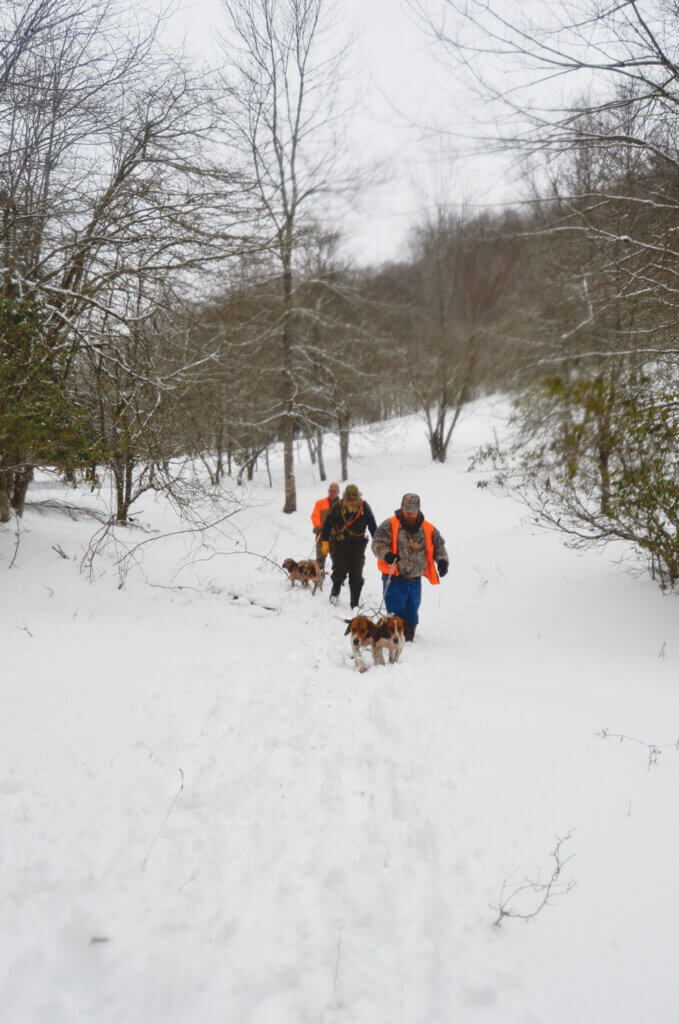
The driving around part might sound mundane, but it wasn’t. The scenery was spectacular. At every bend in the road, the landscape would dip and give way to a panoramic vista of layers upon layers of undulating mountains, and then we’d stumble upon a lone stone cabin nestled in a clearing or a red barn standing in a snowcapped field like a sentry. It was easy for me to lose myself in the scenery, wanting to stop at every turn to take photos, but the unmistakable urgent sounds of barking dogs would bring my focus back to the task at hand. The hunt.
And the hunt really isn’t about the killing of bears. It’s about the dogs—Plotts, Walkers, Redbones, Black and Tans, and Blueticks. The group we joined were experts at running bear dogs. Some breed and train to the tune of several thousand dollars per dog—into five digits. Hound Dog, who many say is the best bear tracker in the state, has been hunting bear in the Monongahela National Forest since he was able to lift a gun. He says, “It’s never really about the bear. It’s about training dogs and their excitement. It’s about experiencing the chase.” Dogs are instinctive hunters. They’ve been used in hunting for hundreds of years. But these dogs are uptown. They’re outfitted with GPS transmitters and radio telemetry on their collars. Once the dogs pick up on a bear’s scent, they are released and the chase begins. With the help of GPS, it is easier to pinpoint their location because they can run for miles until the bear decides to shimmy up a tree. The proud hounds will not leave their post at the base of the tree as long as the bear remains in the tree.
I wasn’t sure how I would feel about the experience, and I was curious what DNR had to say about the use of dogs. I called Chris Ryan, WVDNR’s game management services supervisor. “Hunters who use dogs are very helpful. Without them it would be hard to manage the population,” Chris says. “It is the most effective method of harvesting bears.” Through the state’s wildlife management practices, West Virginia has seen a dramatic increase in the black bear population from 500 in 1970 to around 12,000 today, making the population management extremely important. According to WVDNR, 50 percent of respondents primarily hunted with archery equipment, 26 percent used guns without dogs, and 24 percent used dogs to pursue black bears with success rates of 5.2 percent, 6.3 percent, and 19.2 percent, respectively.
Most folks also don’t realize that WVDNR is one of the only self-supporting state agencies. Chris says, “Through the sale of hunting licenses and taxes on sporting equipment, we are able to fund our agency and provide the necessary research on wildlife management. Without our hunters, what we do wouldn’t be possible.” The total economic impact of black bear hunting in West Virginia is significant with totals approaching $52 million.
And that brings me to another lesson. Just because a hunter sees a bear, doesn’t mean he shoots it. Many times, sportsmen will tree the bear and then leash the dogs and let the bear go. In fact, Chris’ research shows that hunters using dogs passed up more legal opportunities to harvest black bears than hunters using archery equipment or gun hunting without dogs. Again, it is often more about the chase and the dogs than the kill.
Another thing that surprised me about the experience was that it was so family-centered. Men, women, and children of all ages participated. The seasoned hunters take pride in training a new generation. They see it as an important connection to one’s heritage. Tree Trimmer explained that children from an early age have a hand in the training. The kids often care for the pups. They help train them by taking a bear claw tied with a string and pulling it through the yard and up a tree. When it comes time to hunt, the children are anxious to see their dogs run.
Finally, what surprised me most is in order to be a good bear hunter, you must have great stamina. Once a bear is tracked and treed, you have to find it. And chances are the bear isn’t going to choose a convenient location. You have to find the dogs by quickly hiking through deep snow and across frigid creeks. You slosh through deep snowdrifts, up steep mountains, over fallen trees, and through thick bramble. And you do this for miles.
Toward the evening of my great bear hunt, after thoroughly canvassing the forest, the dogs caught the scent of a bear. Pandemonium ensued. The hunt was on. And I admit, it was exhilarating. I could not believe how quickly everyone sprinted toward the barking dogs and bear. They didn’t try to gingerly hop from one stone to the next across the swiftly flowing and rather deep creek as if it were a game of hopscotch, like I did. They plowed through as if it were an 80-degree day. They hurdled fallen trees and ducked thorny branches like it was an extreme sport reality show. I thought I was in pretty good shape, but I was always the last in the pack. Of course, to be fair, I was trying to document the entire experience, stopping often to compose the shot—and I had recently torn my calf muscle. (That’s my story and I’m sticking to it.) But seriously, the hunt was more physically and mentally intense than I had expected.
I huffed and puffed. I stumbled and fell, then stumbled some more. Men three times my size sprinted up the steep hillside at a pace I’m sure would win the Olympics. I slung my camera around my neck and clawed my way up the incline, grabbing onto roots and limbs for support. When I finally reached a plateau, I paused to catch my breath. Someone yelled, “Where’s the picture lady? Tell her to get up here!”
The picture lady found a log, sat down on it, and refused to move. I was exhausted. Michael circled back to me and kindly told me to hurry up or I was going to miss the bear. I said, ‘I’m done. I’m not going any further. Don’t wait on me.” I bent over to rub my aching calf, impatiently motioning him on. But he refused to leave me because I wasn’t armed. He tried to coax me further, but I looked to where the rest of the group was circling the tree and it might as well have been Mount Everest. I stubbornly refused, “I’ll be fine. What could happen? Just go.” I stood up and handed him my camera. At that exact moment, everyone started shouting and the dogs began barking hysterically. I looked up to see the bear racing out of the tree, down the hill, right over the log I had seconds earlier been sitting on, with a dozen hounds in pursuit. Michael, who still had my camera, had the presence of mind to capture the photo.
I had one profound thought: “Oh my god, it’s a bear!”



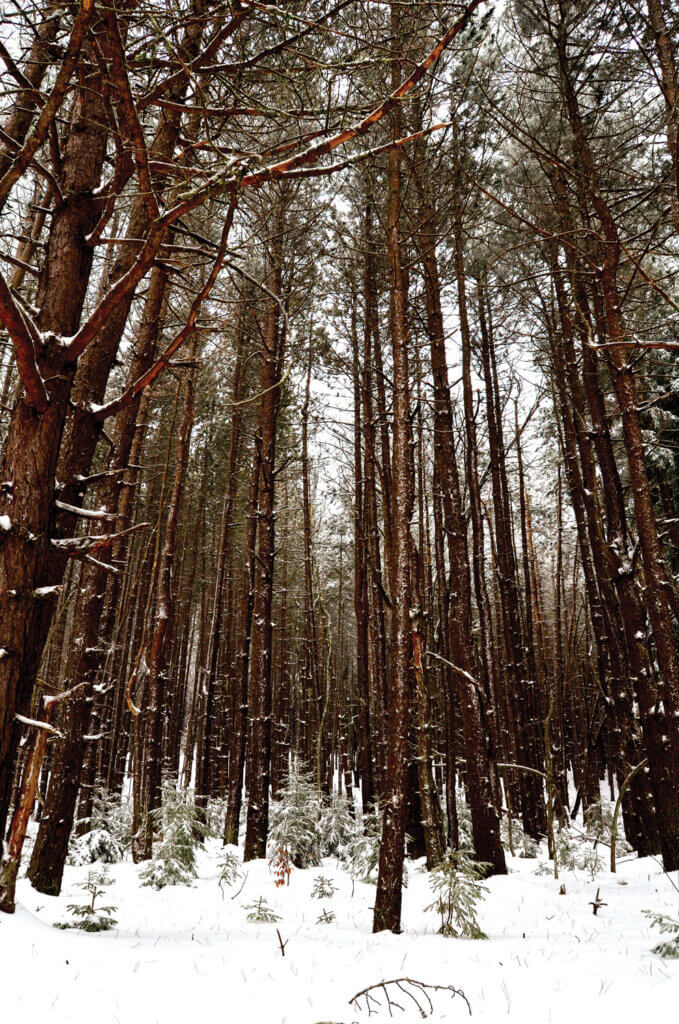
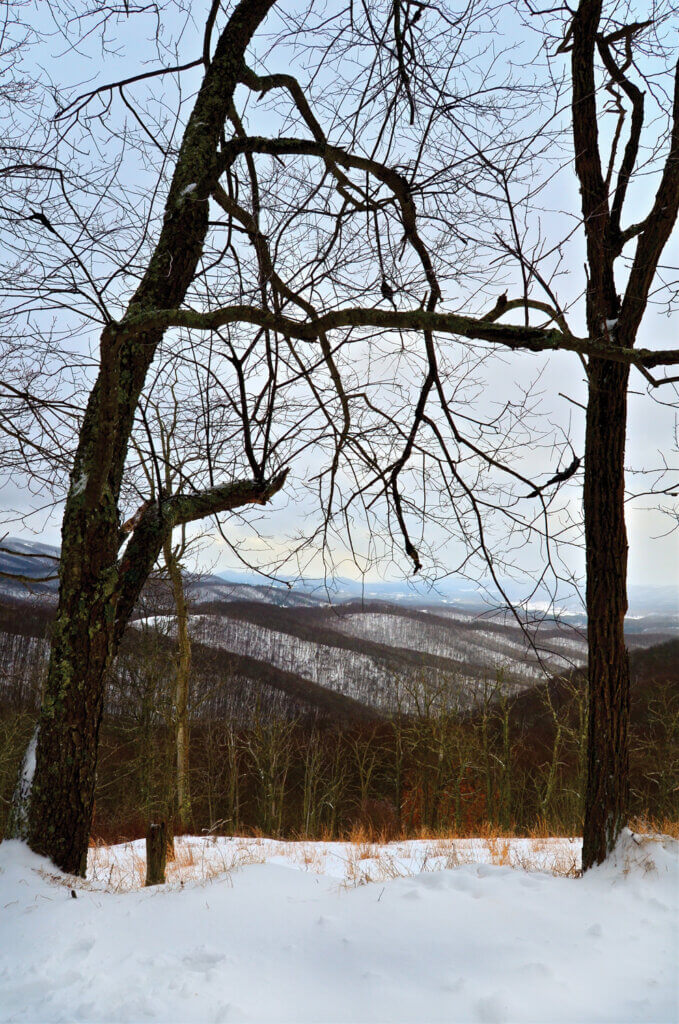
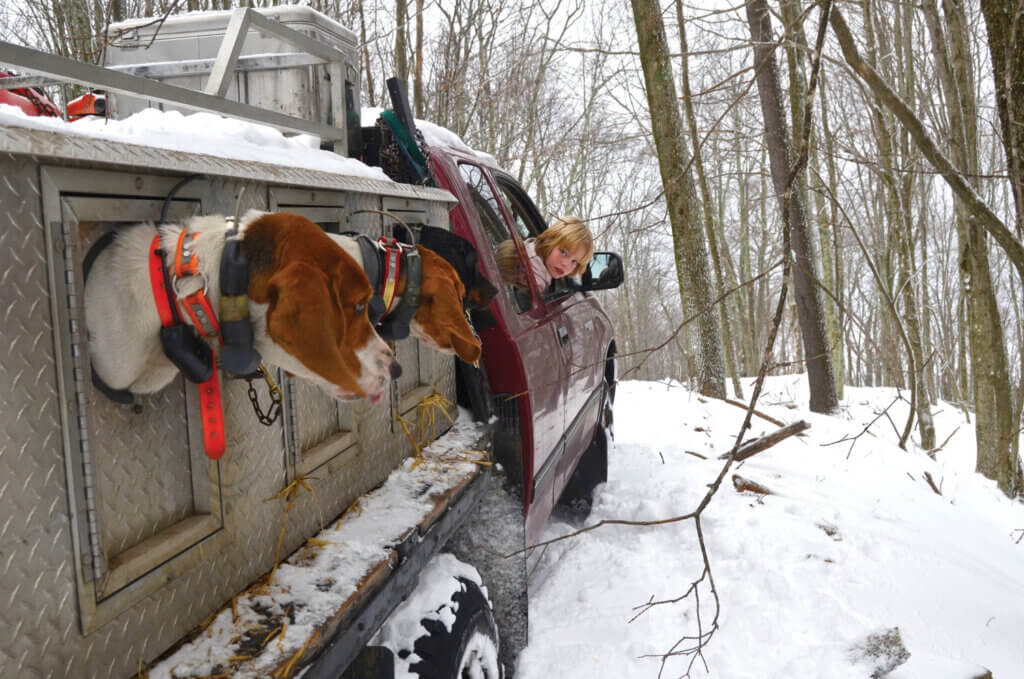
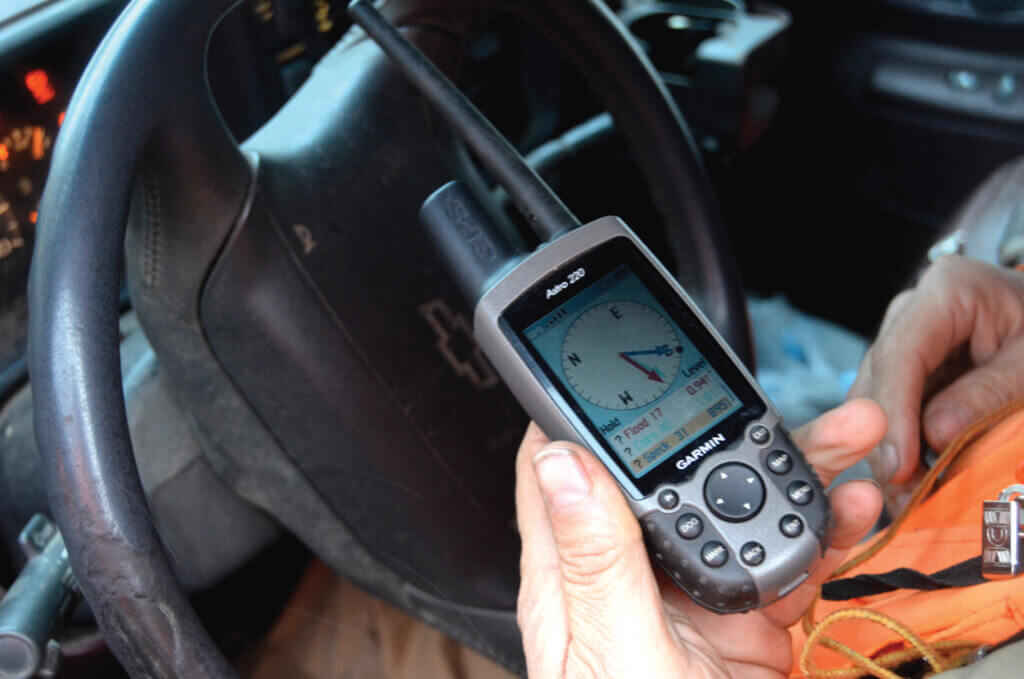
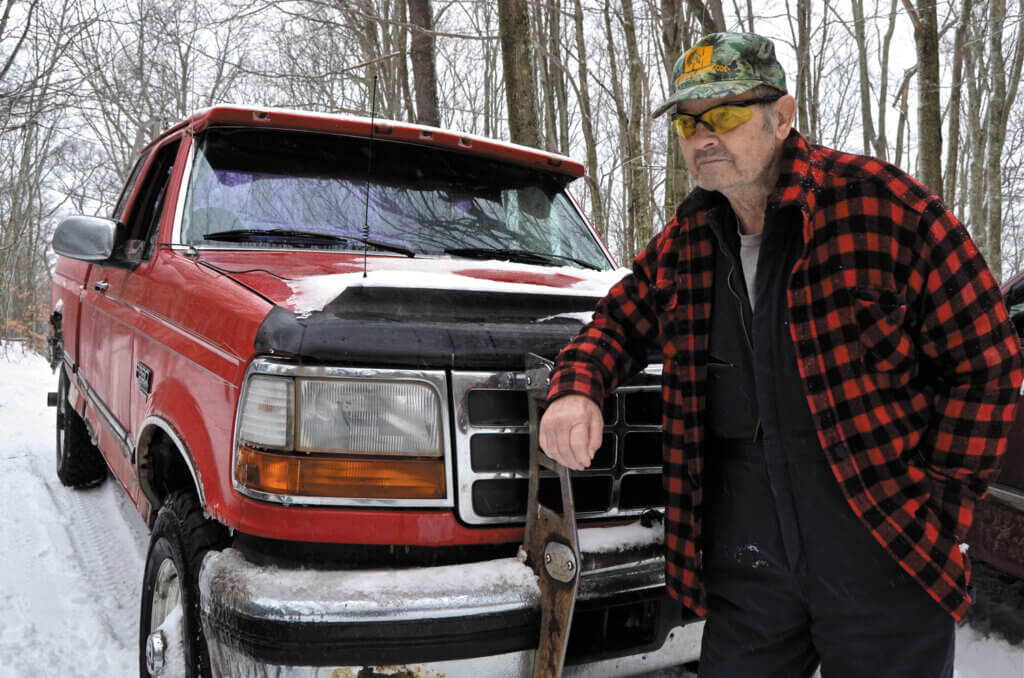
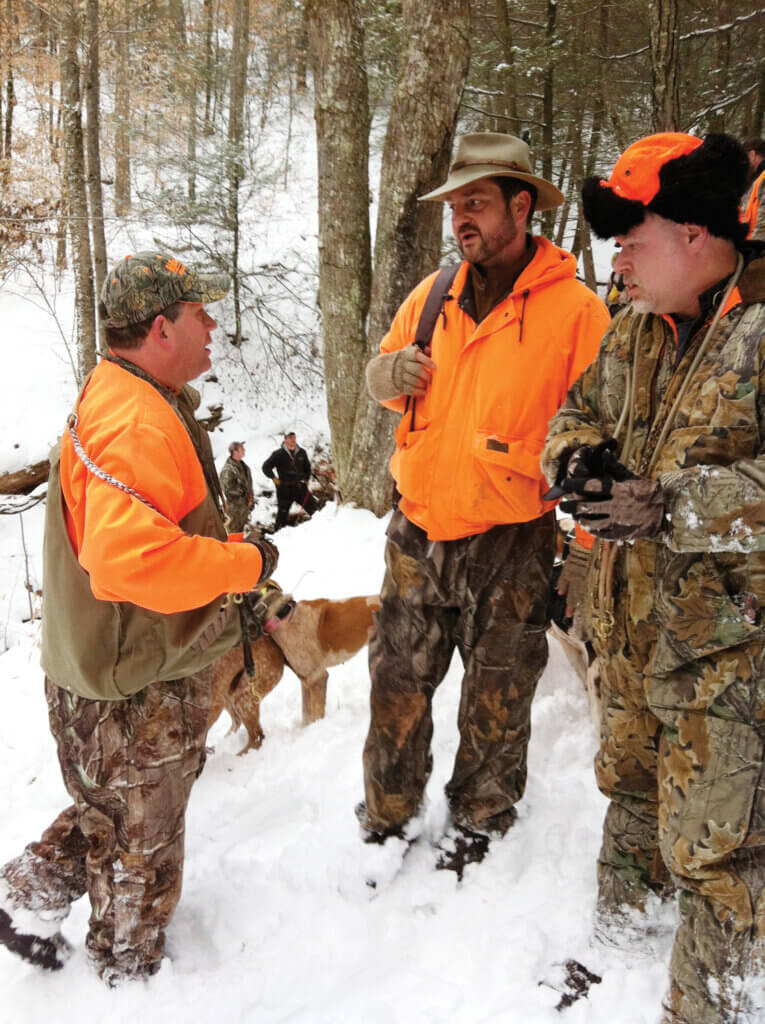
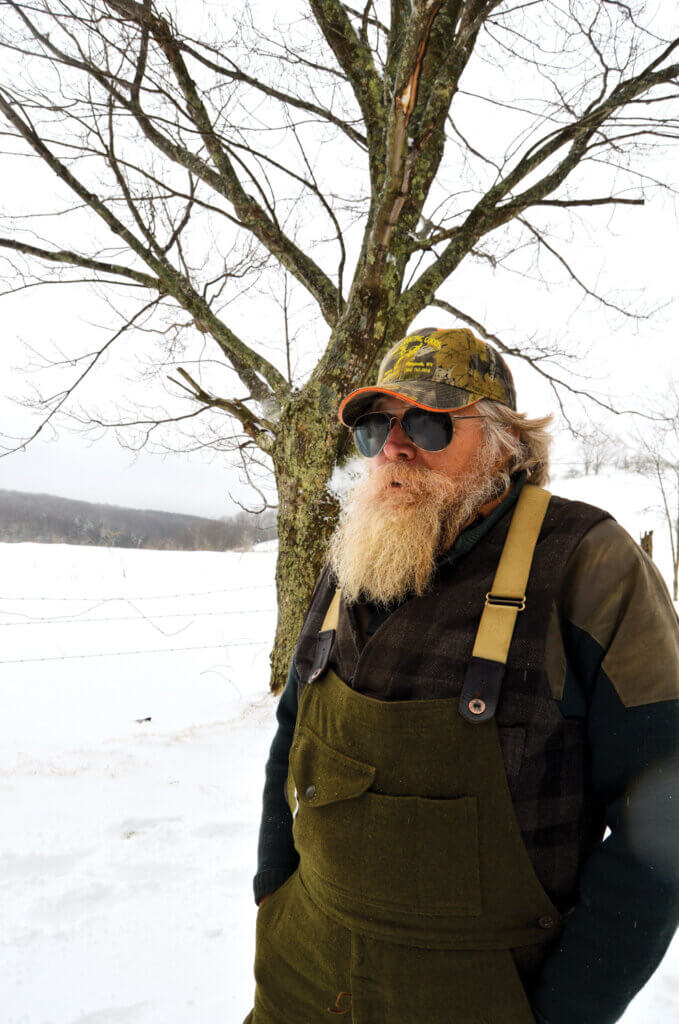
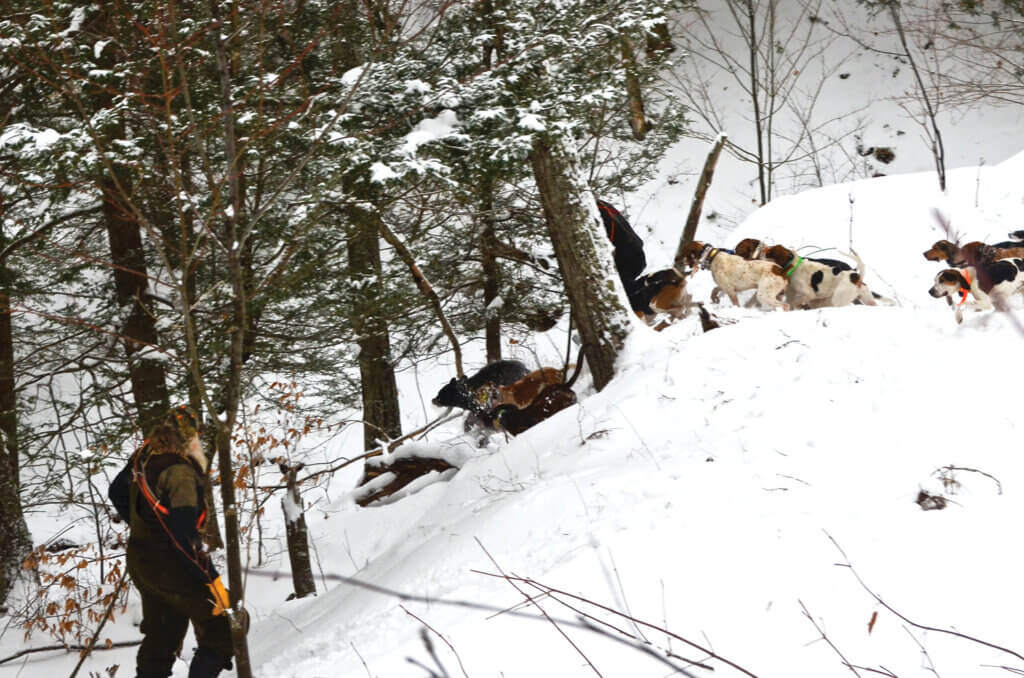
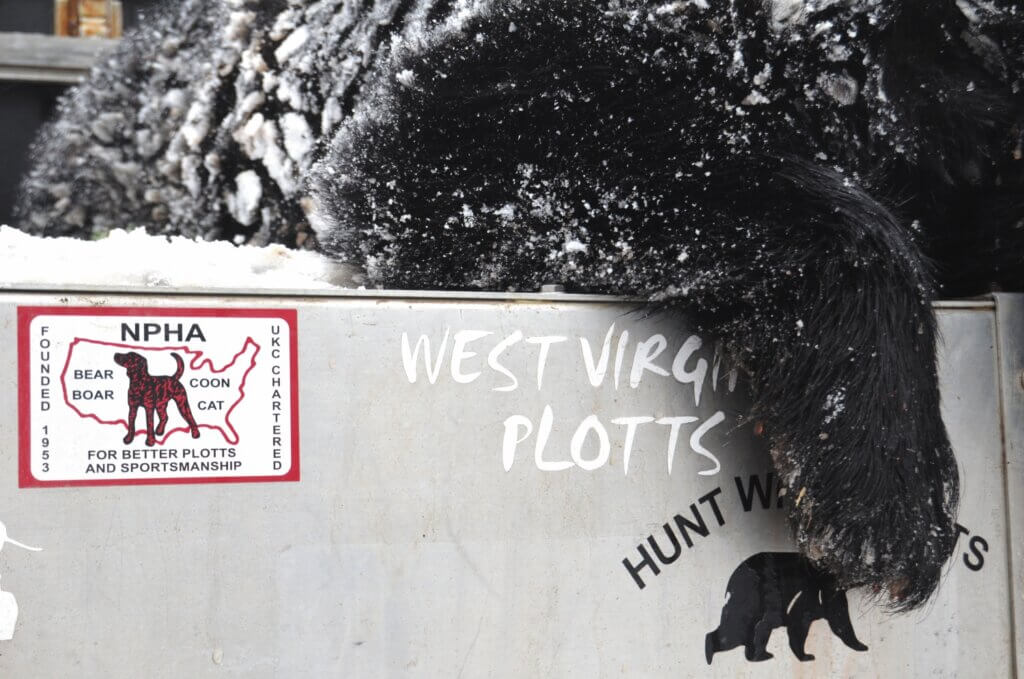









Leave a Reply